By Emma Murphy, Master Gardener
Last year around this time I wrote a blog about reclaiming a garden bed from the dreaded ditch lily (Hemerocallis fulva), now considered an invasive species by many organizations including Ontario Parks and the US Fish & Wildlife Service and the U. S. National Park Service. If you’ve ever struggled with this plant you know what I mean.
The other plant growing in our large Lakefield garden when we moved in (more than 20 years ago) is what I was told was called an ‘outhouse plant‘. I eventually learned that the Latin name for this plant (also called golden glow or tall coneflower) was Rudbeckia laciniata “Hortensia”.
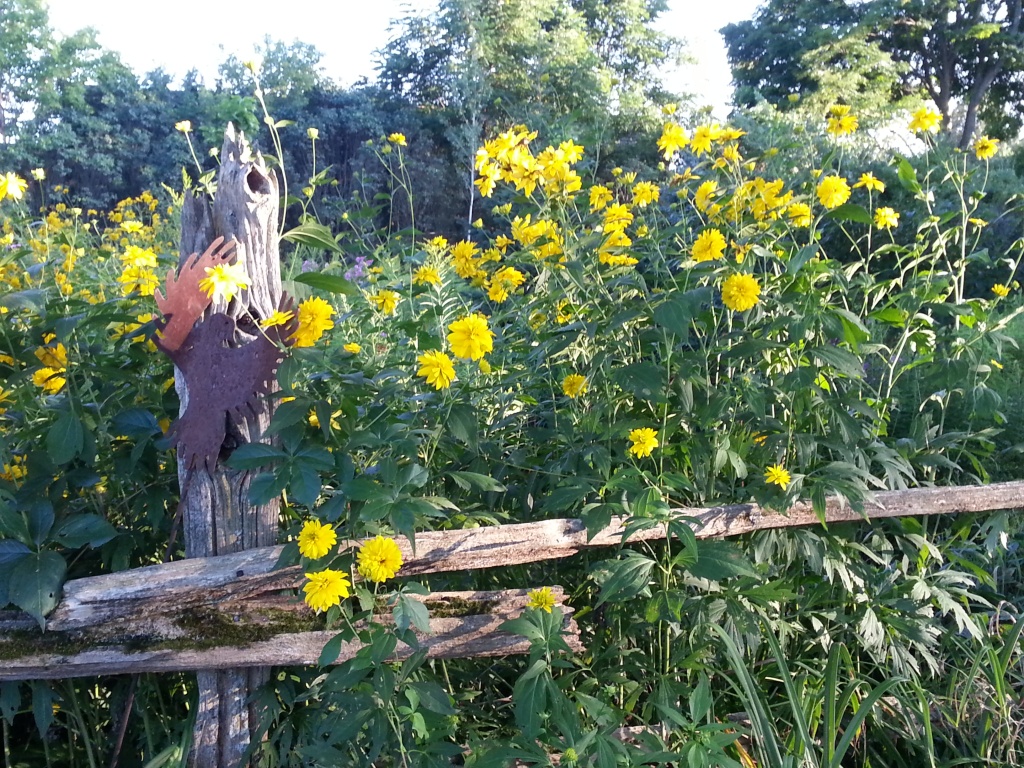
It’s a cultivar of our native Rudbeckia laciniata, also known as Cut Leaf Coneflower or Green Headed Coneflower, which has a lovely simple daisylike flower (whereas the Hortesia cultivar is a double ‘puffy’ flower).
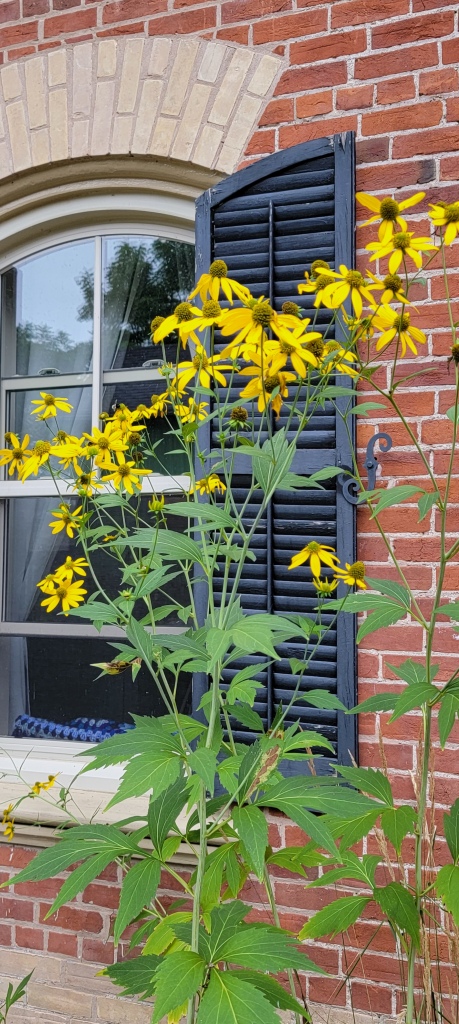
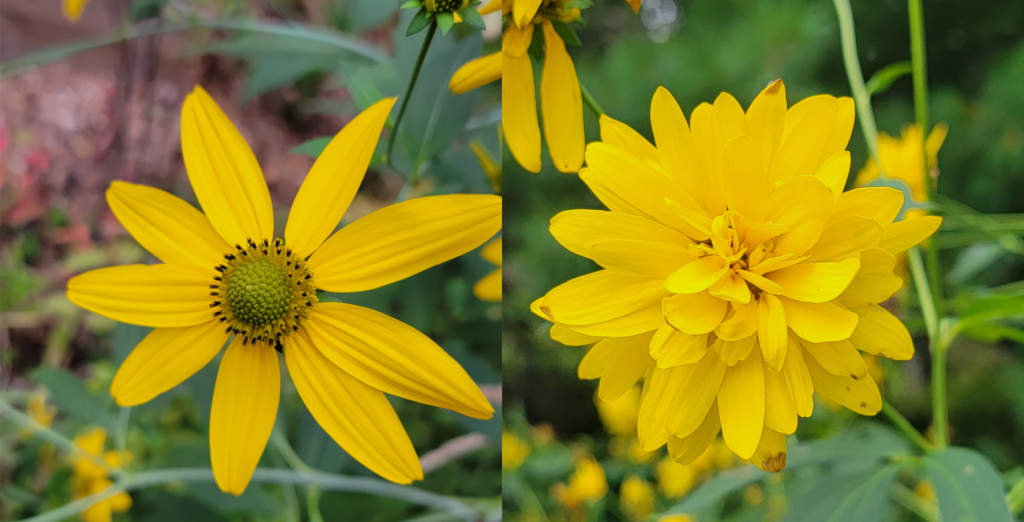
The outhouse plant was pleasant enough so I let them grow for years in what I call our ‘back 40’, meaning our naturalized garden area at the back of the property, behind the cedar rail fence. Yes they were tall and gangly, and fell over in thunderstorms. Yes they spread, but they gave the prolific Canada Goldenrod (Solidago canadensis) and New England Asters (Symphyotrichum novae-angliae) a run for their money in August/September. And hey, I had more than enough to deal with in the rest of my more organized garden!
However, as I started to learn more about both native (and invasive) plants over the years I realized that I might have a problem. The outhouse plant isn’t a huge problem per se, as it can be controlled through digging, Chelsea chop etc., but its double shape means that it offers minimal benefit as food for our pollinators. And I wanted plants that not only look beautiful but have an ecological benefit. So I sat in my hammock and pondered.
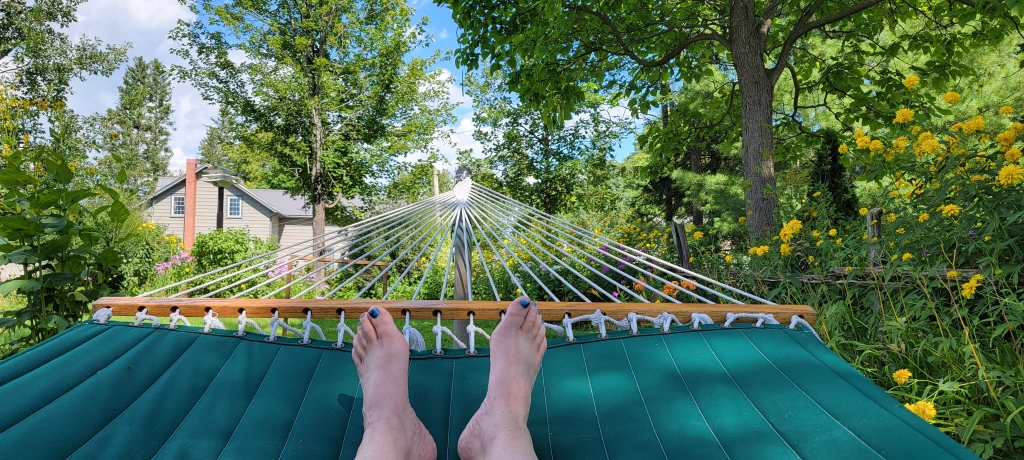
(he’s watching on the right)
As a result of winter sowing (first time this past winter – highly recommend!) I have lots of new native plant seedlings, including some of the ones I featured in my May blog – A Few of My Favourite Native Plants – Culver’s Root (Veronicastrum Virginicum), Cardinal Flower (Lobelia cardinalis), and Green Headed Coneflower (Rudbeckia laciniata). I certainly have lots of the native Rudbeckia, as well as Boneset (Eupatorium perfoliatum), Giant Ironweed (Vernonia gigantea), and Purple Giant Hyssop (Agastache scrophulariifolia).
So the clearing of the outhouse plant began in earnest last week, and by the end of two afternoons I had an area to work with.
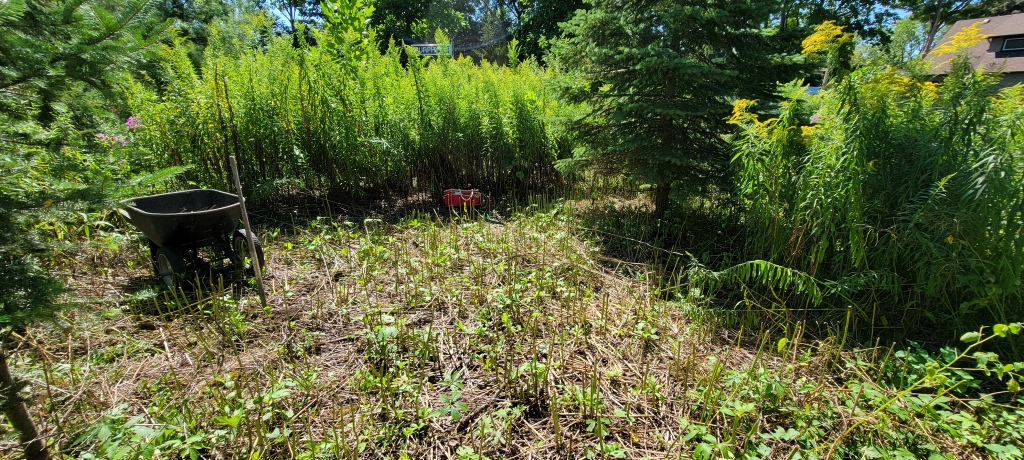
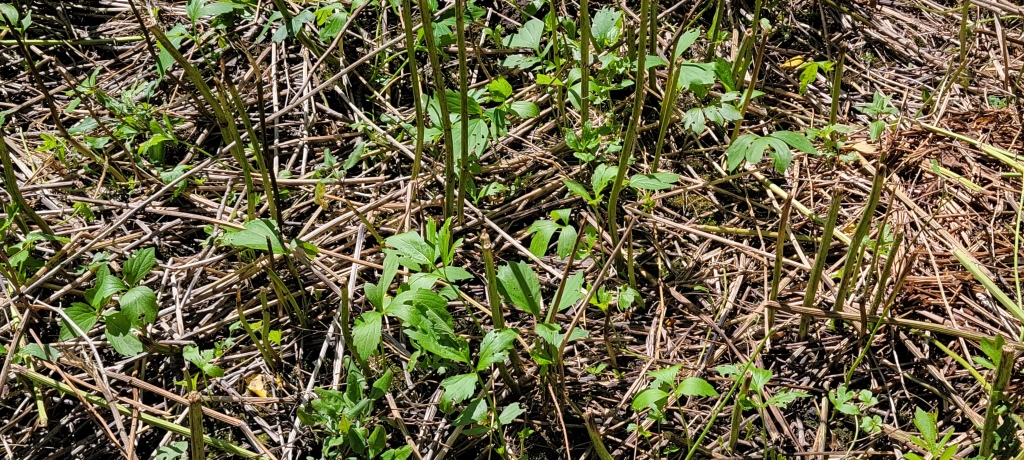
Definitely not light work, but not too difficult either compared to other plants. The area is now clear, and I’ll be putting in Green Headed Coneflower (the native), Boneset, Giant Ironweed, and Purple Giant Hyssop. They can all tolerate a little competition (a good thing for native plants, especially tall ones) and basic soils.
If I have space I might even mix in some shorter plants like native Bush honeysuckle (Diervilla lonicera) and Pearly Everlasting (Anaphalis margaritacea) in at the front as they can tolerate dry conditions. The area is mostly sunny all day. Unfortunately my beloved Cardinal Flower and Turtlehead are too dry for this location.
We’ll see how this experiment works and check back in with you all on another blog. If it works we’ll expand into another area of outhouse plant that I recently cut down, but haven’t removed yet…a work in progress. There are only so many hours in my (still working part time) day. And I still need to get that Canada Ggoldenrod under control…but that’s another story…
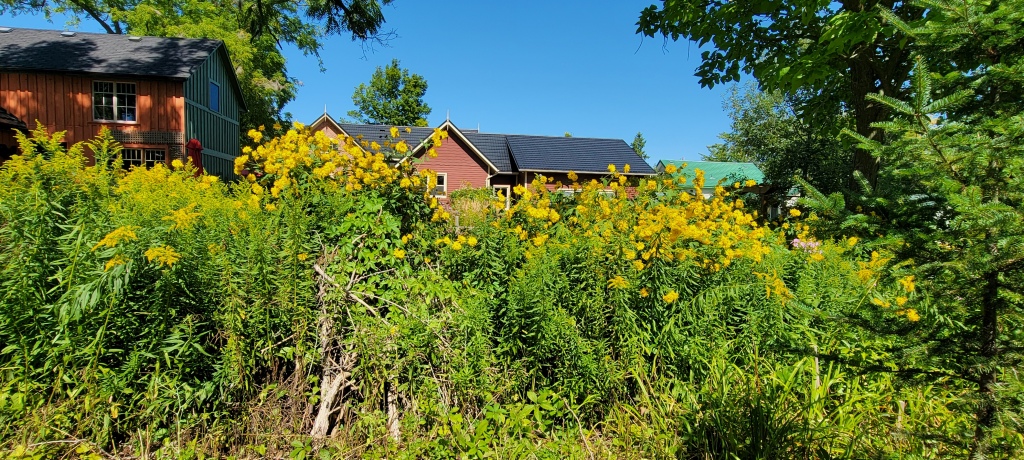
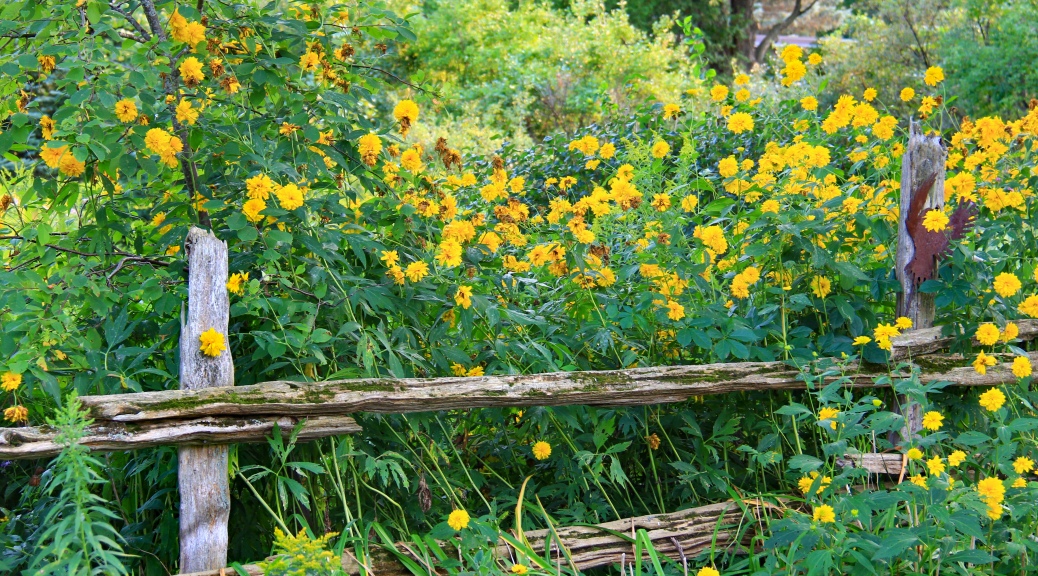
So now I know my unnamed flower is “outhouse plant”! (And we don’t even have an outhouse.) Guess if anyone asks I’ll just give the botanical name, sounds better.
LikeLike
This beautiful flowering plant has an important place out on our big old farm here. It sounds like we have a lot more room for it on our extensive property with dozens of acres out back, too. The “Golden Glow” is actually the Rudbeckia Laciniata Hortensia, and people marvel over it every summer, starting in mid July, when it begins to showcase it’s tall stems bearing astounding yellow flowers that looks like big carnations. My family, my kids and husband and I, call them simply “The tall-ies” as in “tall” with an “ease” at the end, making it plural just for fun.
I am convinced now, that I am actually going to begin more helpful writing about beautiful plants, since this article came off as daft, snobby and rude. To lighten the mood for every one else, this author was rude about Rudbeckia. LOL
I control the patches of this beautiful king of the flowers here. I have a patch between the silos, a patch by the inground pool. A patch by one of the smaller barns, and have been placing a patch here and there these past few years. I have no reason to worry if they are not native to this wilderness. We have plenty of bees and pollinators. Bees love these plants, they missed the memo on how they’re supposedly not supposed to suck nectar from these huge , lovely flowers.
I wholly support planting these beautiful tall Golden Glow giant flowers for a mid to late summer show of color in your landscape. People notice them right away! Take in all the compliments and return a thank you to those dear enough to mention it.
LikeLike